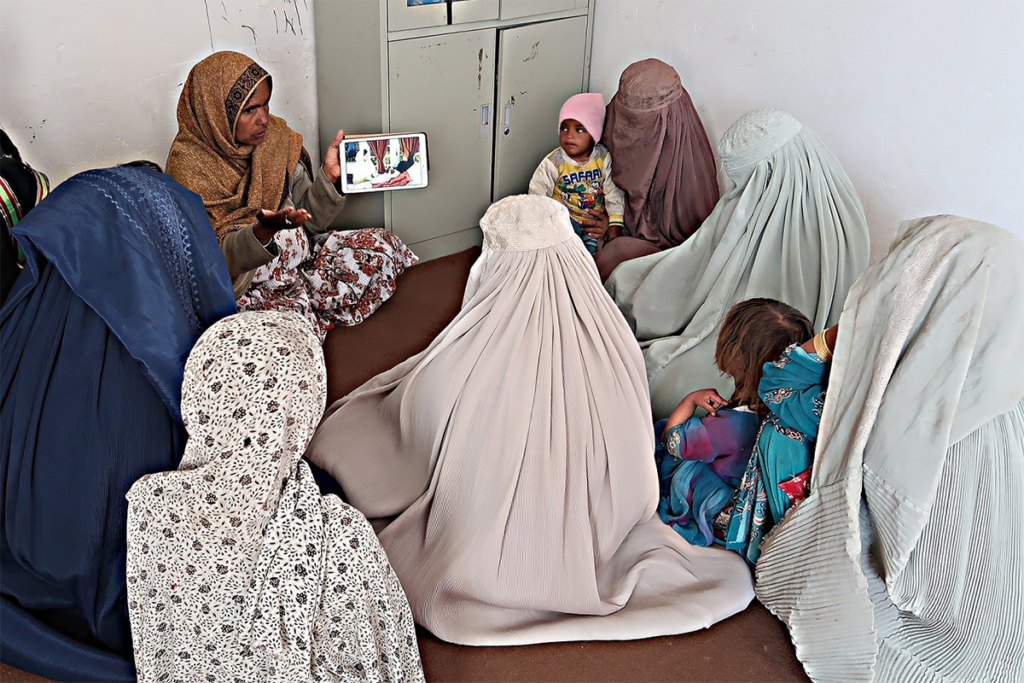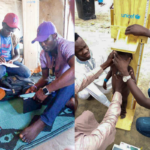Based on research conducted with Leila Dal Santo, Sayed Haroon Rastagar, Shafiqullah Hemat, Sharif Ahmad Ahmadzai, Sayed Omar Alami, Jenae Tharaldson, Subarna Pradhan, Lisa Dulli and Catherine Todd
Based on evidence that digital health technologies can improve engagement with clients, enhance counseling efforts, and make more efficient use of community health worker (CHW) time, the USAID-funded Helping Mothers and Children Thrive in Afghanistan (HEMAYAT) project designed and pilot-tested a health video library (HVL). The HVL is a tablet-based collection of videos delivering dramatizations encouraging best reproductive, maternal, newborn and child health (RMNCH) behaviors and services. The HVL is shown by CHWs, who then lead targeted counseling, to target clients – married women who are pregnant or have a child under the age of five – in their homes or at health facilities. The goal of the HVL is to support RMNCH counseling efforts to improve knowledge and service uptake among those target clients. My colleagues and I conducted a pilot study to assess the feasibility and acceptability of the HVL among clients and CHWs.
Challenges faced by community health workers
It goes without saying, but I’ll say it for good measure, that this is no easy feat. The expectations placed on CHWs in Afghanistan are formidable. Despite limited training and, for some, low credibility relative to facility-based health workers, CHWs are expected to retain and recite large amounts of RMNCH information, provide detailed counseling, and field any number of questions or concerns from women and their husbands. They face additional challenges delivering essential RMNCH information to certain groups, especially those in hard-to-reach places or those who are underexposed to such information due to conservative gender norms. This project asked, what can governments and program implementers do to lighten the burden of CHWs? That’s where technology and the design of the HVL emerged.
Testing HEMAYAT’s health video library
We conducted a concurrent mixed methods pilot study in three rural districts of Afghanistan: Char-Kent in Balkh Province, Karukh in Herat Province, and Daman in Kandahar Province. The study consisted of a post-intervention survey with women (n=473) and men (i.e., women’s husbands) (n=468) to assess client exposure to and satisfaction with the HVL. We also conducted in-depth interviews with CHWs (n=47) and community health supervisors (n=6) to understand whether the HLV was operationally feasible and perceived as acceptable for daily work. In two different articles, our study team along with participants reported client-level results, and our study team examined feasibility and acceptability among CHWs.
Is the health video library acceptable and feasible?
More than half of female clients in Balkh and Herat were aware of or had seen videos from the HVL, but exposure in Kandahar was much lower. Men’s exposure to HVL in the survey sample was relatively low (less than 17%) across all provinces, yet exposure among men in Kandahar exceeded that for women. Exclusive breastfeeding and postpartum hemorrhage were the most commonly viewed video topics across all provinces. Regardless of exposure and content, nearly all women (94.7–100%) and most men (84.6–92.3%) reported that they liked getting health information from videos shown by CHWs. Despite general interest in the HVL, clients reported some challenges. For example, older and uneducated clients initially had difficulty understanding videos, due to either content or a different local dialect. Illiteracy was also mentioned as contributing to difficulty understanding videos for a few women (mostly in Kandahar), though comprehension problems were reportedly readily resolved through post-video counseling or by watching the videos again.
What’s next for the health video library?
We also think there are opportunities to improve training for CHWs, even outside of the HVL intervention, as CHWs will likely be expected to have greater interaction with digital health technologies over time. For example, CHWs may need courses to improve e-literacy and access to existing hotline services that provide real-time information on essential topics. We foresee various opportunities to better position CHWs as successful, credible change agents for RMNCH and other topics, and the HVL represents the latest portable and most visually engaging option.
Photo caption: Mrs. Roqia, a community health worker (CHW), shows a video clip developed by the HEMAYAT project about breastfeeding and its benefits to the mothers of the Nasaji village of Daman District, Kandahar
Photo credit: Lailoma Barekzai/HEMAYAT Jhpiego



